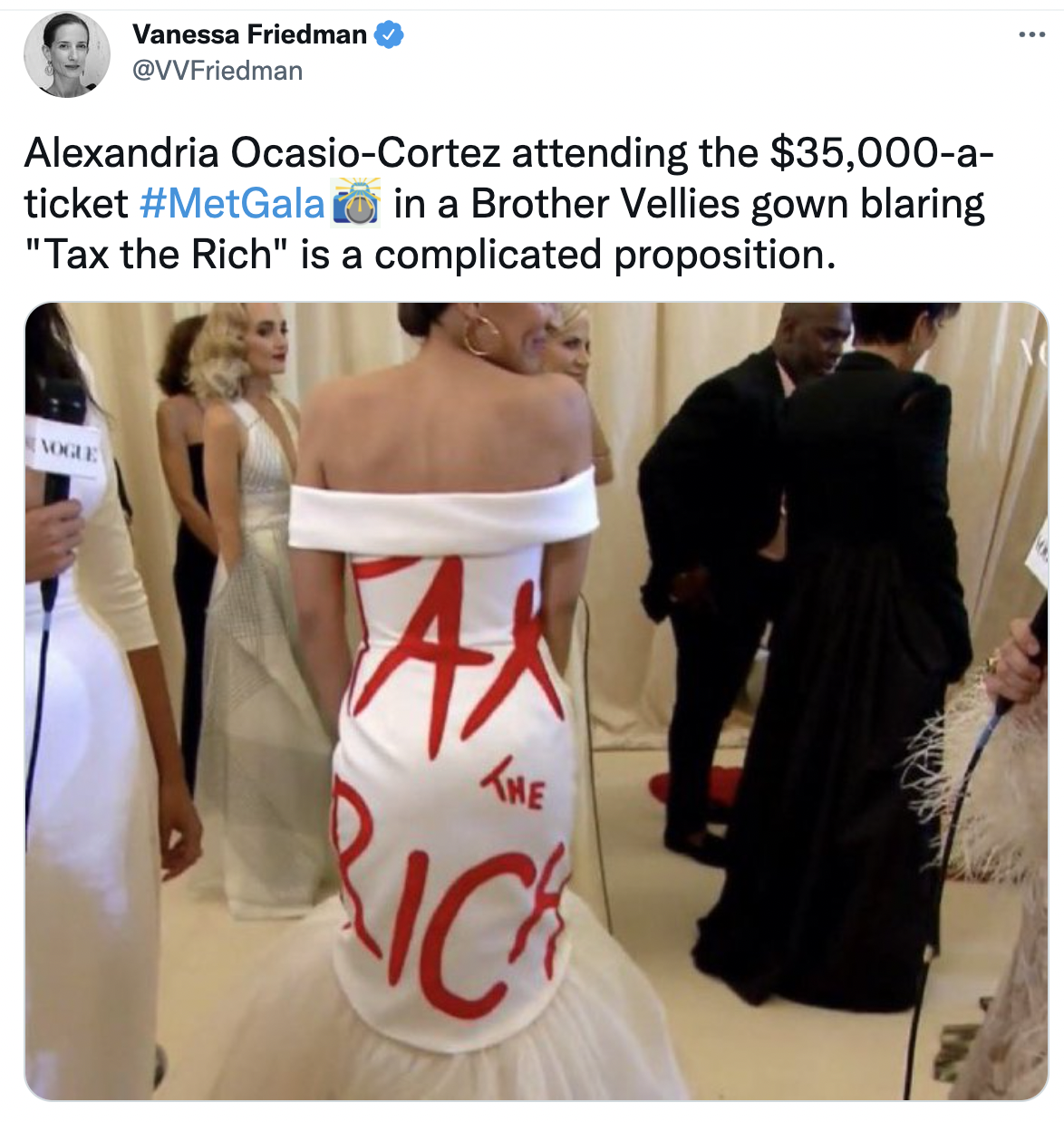Look here, at this photo:

I biased you by using that specific tweet, and I get that, but probably the first thing you thought of was “Wow, tax the rich … at a rich event … what’s happening here?”
So then there’s this take:
Right, but it’s not actually the point.
Narrative and belief structure are deeply tied, so it’s almost like if you’re AOC about to wear this dress, you need to think to yourself: “How will Tucker Carlson spin this dress?” Because whatever or however he does with it, that’s what millions of people are going to think.
It’s the same with work and marketing campaigns. It has almost nothing to do with the desired narrative. It’s all about how the narrative lands with someone’s pre-existing belief structures (or, you know, if you make a typo).
For another example of how all this works, consider:
In almost any other scenario, Tucker would think Nicki was vile, and hate everything she stands for. But here, her narrative — “swollen testicles” — went right to his beliefs — “Vaccine mandates bad, Biden evil and demented” — so he used her work to bolster his. Phrased another way:
A narrative itself is never real. A narrative becomes real — it gains life — because of the belief structures that circle around it.
Remember that, whether you’re in marketing, media, or just like talking to people.
